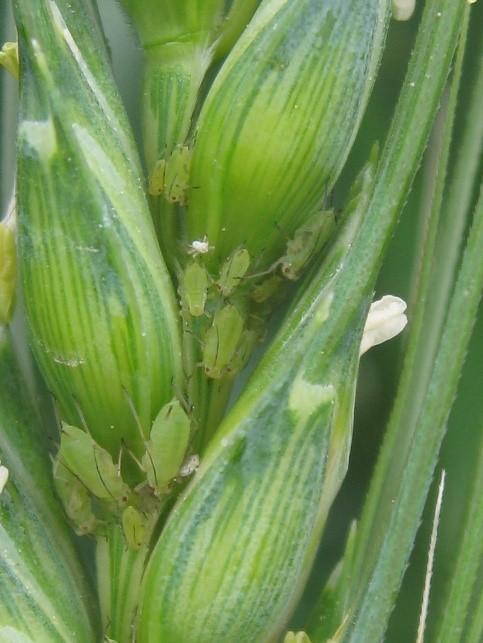For the first time, CABI scientists have studied the distribution and population dynamics of wheat aphids and their natural enemies in Pakistan through seasons and periods of time; this research could be useful to develop better pest management methods

Credit: CABI
For the first time, CABI scientists have studied the distribution and population dynamics of wheat aphids and their natural enemies in Pakistan through seasons and periods of time. This research could be useful to develop better pest management methods and safer, healthier crops in wheat production.
The two-year study led by Dr Muhammad Faheem across ten farms in five Punjab districts sought to discover the relationship between different timings, seasons, space and the presence of aphids and the insects that eat them – particularly syrphid flies – in varying deliberately-selected farming scenarios; combinations of rice, arid and cotton.
Wheat aphids are well known pests of the cereal crop – causing up to 20 to 80% loss of wheat yield, particularly in Pakistan where over 26.3 million tons of wheat was produced in 2017-18 and where wheat accounts for 10 percent of value added in agriculture. The presence, spread or influx of aphids had led to considerable economic loss especially comparing the average yield of wheat in Pakistan with neighbouring India and Bangladesh.
In the paper published by PLOS ONE, Dr Faheem and his team revealed seasonal trends of wheat aphids in the studied areas, citing temperature as a key factor in the movement of aphids. Dr Faheem said, “no key differences in aphid activity were observed in the colder and warmer parts of Punjab. In addition, although Syrphid flies are efficient predators of aphids, we also found no correlation between the population of aphids and their natural enemies in both years of the study.”
There are several reasons cited for the findings made including behaviour differences among species; ultimately this study provides baseline data for further investigation into two approaches in aphid management – top down, the use of natural enemies and bottom up, the use of fertilisation and irrigation.
Dr Faheem also remarked that “understanding where aphids will tend to infest, and at what time is necessary to effectively manage use of biocontrol agents”. The researchers recommend further study as a follow on to this baseline for better understanding of how wheat aphids and their natural enemies are spread in order to improve integrated pest management programs.
###
Additional information
Full paper reference
Faheem M, Saeed S, Sajjad A, Wang S, Ali A (2019) ‘Spatio-temporal variations in wheat aphid populations and their natural enemies in four agro-ecological zones of Pakistan,’ 2019, PLoS ONE 14(9):e0222635.
This paper is available here: https:/
Collaborators
Department of Entomology, Faculty of Agriculture, University of Agriculture, Faisalabad, Pakistan
Institute of Plant and Environment Protection, Beijing Academy of Agricultural and Forestry Sciences, Beijing, PR China
Department of Entomology, University College of Agriculture and Environmental Sciences, The Islamia University of Bahawalpur, Bahawalpur, Pakistan
Department of Entomology, Faculty of Agriculture & Environmental Sciences, Muhammad Nawaz Shareef University of Agriculture, Multan, Pakistan
Funding
This work was supported by the Punjab Agricultural Research Board (PARB) Lahore, Pakistan
Media Contact
Wayne Coles
[email protected]
44-014-918-29395
Related Journal Article
http://dx.




